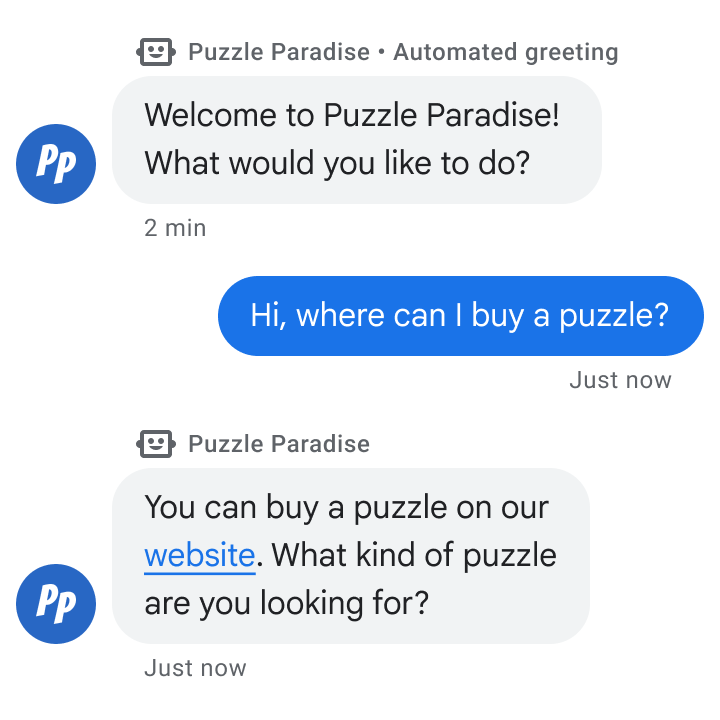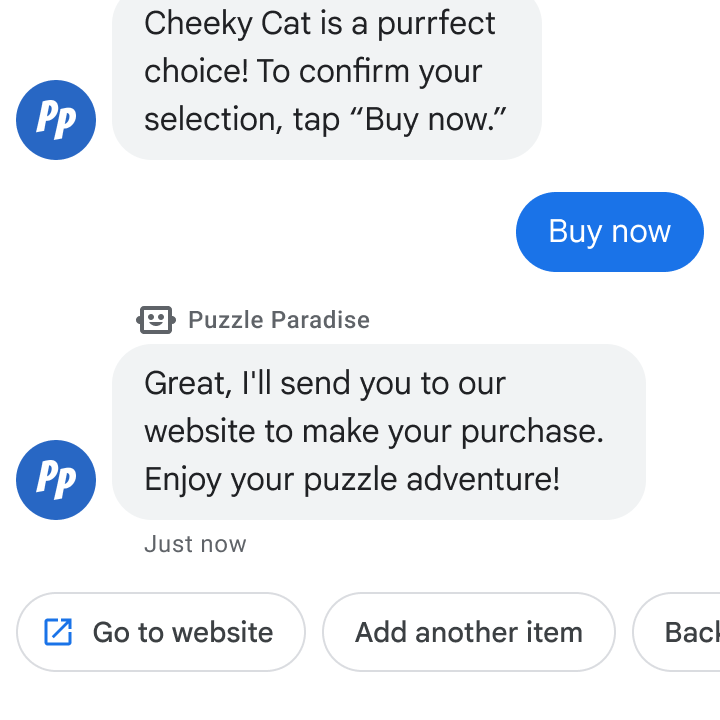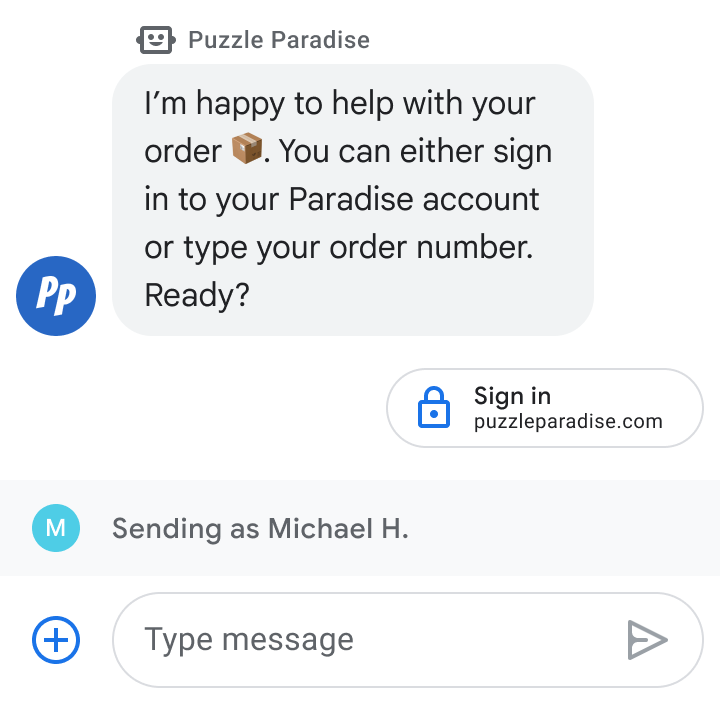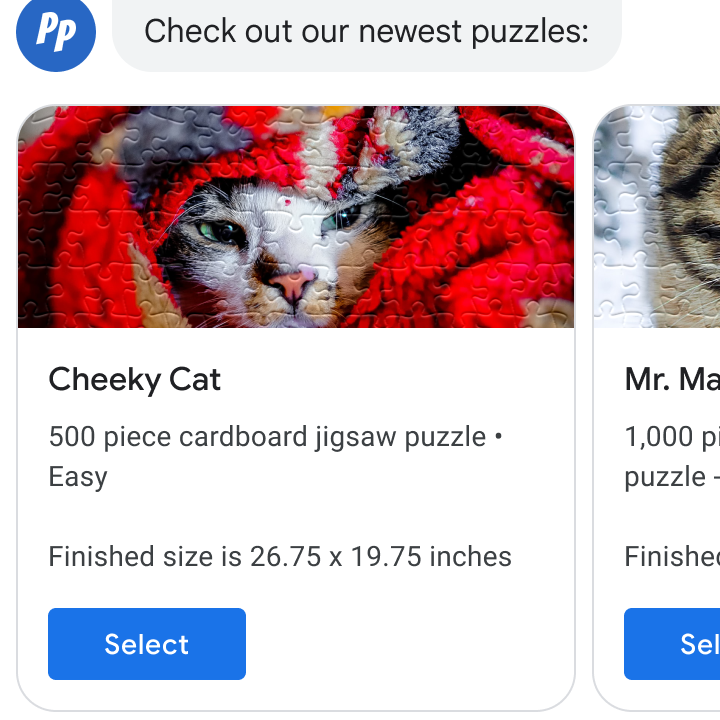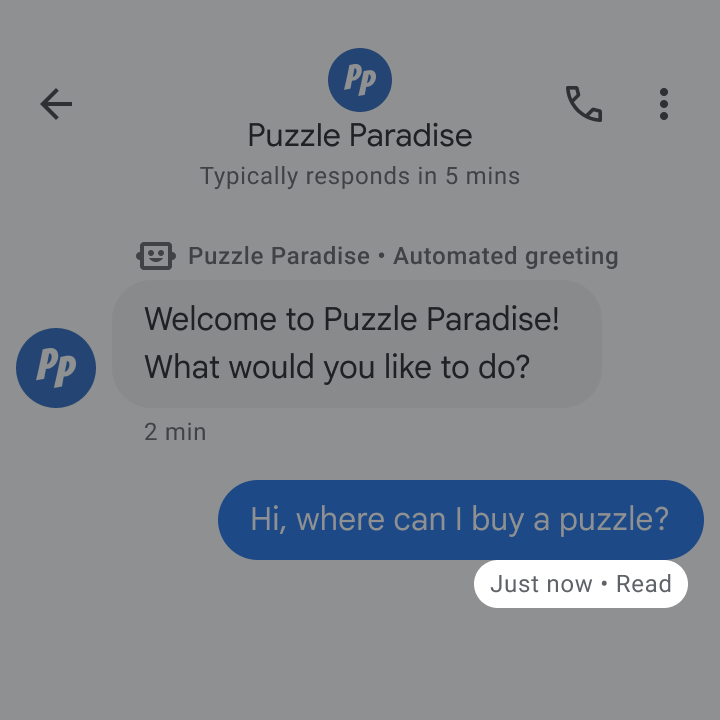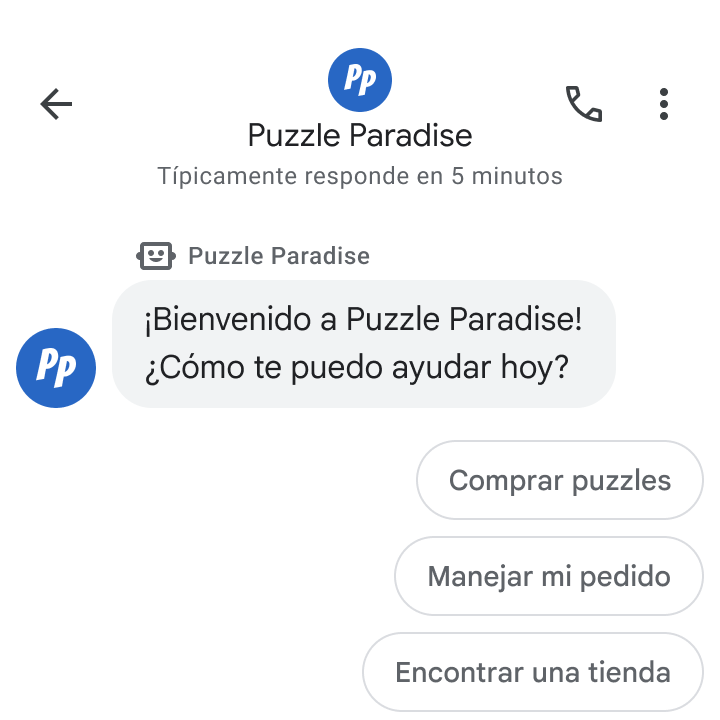Business Messages features
Business Messages helps you interact with customers with a variety of features for developing agents and exchanging messages. You can learn more about those features by watching the following video, exploring the links on this page, or chatting with our live Features Intro Bot.
Once you've created an agent, you can chat with the Business Messages Helper Bot to experience the features yourself.
Messages
Send and receive messages between customers and your brand's agent. Business Messages provides a variety of message types to enhance the conversation. You can use the message's context to make decisions about how to route and process the message content. After you respond, you can also track the user's receipt of your message.
Agents
Agents are conversational entities that users interact with. Set the agent name and logo to reflect your brand, and specify welcome messages and conversation starters to guide users to supported topics.Through messaging availability, you can specify when the agent is available. Business Messages supports responding as either a live agent or a bot and switching between these types of representatives during conversations.
Entry points
Business Messages provides many entry points to help customers contact your agent. Configure your agent to be accessible from Google Search, Google Maps, and from your brand's own channels. Make decisions about how to route or process customer messages based on which entry point they used to start the conversation. Some entry points also provide additional context information.
Suggested replies
Suggest contextually relevant actions and replies to the user. These appear at the bottom of the conversation. With suggested replies, recommend messages that your agent knows how to respond to. Suggested actions can be links that open other default apps, such as a link to your business's website, or a link to dial your business's phone number.
OAuth
OAuth allows agents to verify users' identities and to provide personalized information in conversations in a secure way. Your agent can send an authentication request to the user and, after the user signs in to the trusted OAuth provider, receive an authorization code from Business Messages. Using the authorization code, you can integrate with the service's APIs and support conversation flows that require user identity information.
Live agent transfer
Your agent can switch between human and automated responses any time during a conversation. When you perform a live agent transfer, you can send an event to users to indicate that a live agent has joined or left. Users can also request to have a live agent join the conversation, which sends a special type of event to your agent. If your agent's chat bot detects that a live agent would be appropriate for the conversation, your agent can even send a suggested action to the user, to suggest that they request a live agent.
Rich cards
Rich cards package related information, media, and suggestions into a single message. Use rich cards to display chunks of information compactly, so that users can understand it at a glance. You can also string together rich cards to create a rich card carousel. Carousels allow users to compare items and react to each individually.
Message receipts
Message receipts inform the sender about what happened to their message. With Business Messages, you can send and receive both delivery and read receipts. When a user sends a message, receipts assure them that your agent received and read their message. Your agent can also use receipts for quality control, or to track metrics for better interaction designs.
Locations
Associate your agent with physical locations using Place IDs from Google Places. By using the Place ID, you identify which physical location a user messaged and determine the best course of action for responding to the user.
Localization
Business Messages enables agents and locations to be responsive to users' preferences by passing user locale settings to agents, enabling agents to specify a default locale and unique conversational settings per locale, and resolving matches between users' locales and an agent or location's supported locales. By detecting locale, Business Messages agents can localize their experiences by making automated and live agent interactions aware of users' regions and language preferences.
Surveys
Send surveys to users to measure customer satisfaction. Surveys appear in a dialog above the conversation and allow users to rate their experience. You can also use the details that Business Messages provides to track your own metrics, such as agent response rate and number of messages received.
